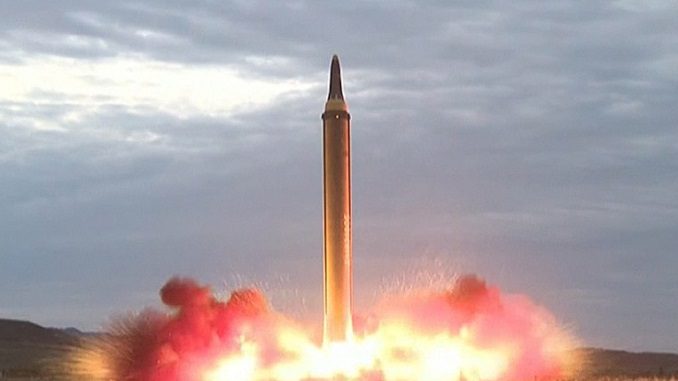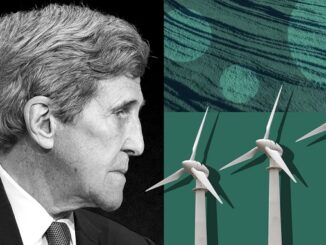
The international community and the U.S. scrambling for a plan to stop leader Kim Jong-un’s seeming unrelenting march to becoming a nuclear power, The Hill reads.
The last test launch, the second to fly over Japan, clearly proves the U.S. territory of Guam is within North Korea’s striking distance, experts said. It followed this month’s nuclear test, which U.S. officials have publicly all but confirmed was a hydrogen bomb far more powerful than the atomic bombs it previously tested.
“I‘m assuming it was a hydrogen bomb,” Gen. John Hyten, commander of U.S. Strategic Command, told reporters Thursday during Defense Secretary James Mattis’s visit to his base.
“I‘m not a nuclear scientist, so I can’t tell you this is how it worked, this is what the bomb was … But I can tell you the size that we observed and saw tends to me to indicate that it was a hydrogen bomb and I have to figure out what the right response is with our allies as to that kind of event.”
Early Friday morning local time, North Korea launched what U.S. Pacific Command said was an intermediate range ballistic missile (IRMB).
The missile flew over the northern Japanese island of Hokkaido before landing in the Pacific Ocean. The missile is said to have flown about 3,700 kilometers (2,300 miles) and reached a maximum altitude of 770 kilometers (480 miles).
That trajectory puts Guam, 3,400 kilometers from North Korea, squarely in the rouge state’s range, physicist David Wright wrote in a blog for the Union of Concerned Scientists.
“The range of this test was significant since North Korea demonstrated that it could reach Guam with this missile, although the payload the missile was carrying is not known,” wrote Wright, director of the group’s Global Security Program.
Still, the missile is likely unable to destroy Guam’s Anderson Air Force Base as Kim has stated he wants to do, Wright continued.
“This missile very likely has low enough accuracy that it could be difficult for North Korea to use it to destroy this base, even if the missile was carrying a high-yield warhead,” he wrote. “I estimate the inaccuracy of the Hwasong-12 flown to this range to be likely 5 to 10 km, although possibly larger.”
Friday’s test follows North Korea’s Sept. 3 nuclear test, its sixth and most powerful to date.
This week, analysts at prominent North Korea monitor 38 North estimated the yield of the test was 250 kilotons, based on the strength of seismic activity. That’s consistent with Pyongyang’s claim of having tested a hydrogen bomb.
By comparison, the bomb the United States dropped on Hiroshima in 1945 released about 15 kilotons of energy.
Despite the progress, Hyten said North Korea still has work to do before being able to hit the United States with a nuclear weapon.
“They haven’t put everything together yet,” Hyten said. “It’s just a matter of when, not if.”
But the rapid pace of North Korea’s quest for a nuclear-capable intercontinental ballistic missile (ICMB) has left officials racing to curb the program.
“We’re out of time,” National Security Advisor H.R. McMaster said at the White House press briefing Friday. “We’ve been kicking the can down the road, and we’re out of road.”
This week, the United Nations Security Council passed its strongest sanctions yet against North Korea. The sanctions banned North Korean textile exports and capped its imports of crude oil.
But to get the support of Russia and China, which have veto power in the council, the sanctions were watered down from the Trump administration’s original goal of banning all oil imports and freezing international assets of the North Korean government and its leader, Kim Jong-un.




Be the first to comment